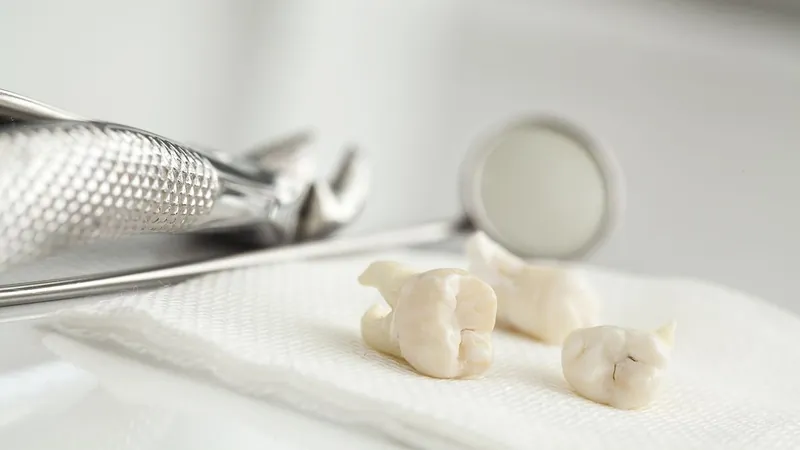
From Dental Chair to Emergency Room: How a Routine Appointment Triggered a Life-Threatening Stroke
2024-11-13
Author: Ming
Introduction
In a shocking turn of events, a man in his late 60s from Australia experienced a severe health crisis just 30 minutes after a seemingly routine dental appointment. The patient visited his dentist to have two teeth extracted, a common procedure that would eventually lead to an unexpected and dire diagnosis.
Symptoms and Emergency Response
Immediately following his dental work, the man exhibited alarming symptoms. He felt dizzy, began vomiting, and noticed that his vision was severely distorted—he described it as everything being tilted 90 degrees counterclockwise. Concerned, he sought help at the emergency department.
Upon arrival, doctors quickly assessed the man's condition and noted high blood pressure readings. His symptoms escalated as he appeared to have trouble coordinating his movements; his eyes flickered to the left, and he had difficulty walking, often losing his balance and falling to the right. A series of scans revealed the unsettling truth: bleeding in the lower-left half of his brain, marking the diagnosis of an intracerebral hemorrhage (ICH), which is a type of hemorrhagic stroke caused by the rupture of a blood vessel within the brain.
Critical Interventions
The immediate response involved several critical interventions: halting the bleeding, removing any clots, and relieving pressure on the affected area of the brain. Fortunately, the man received necessary care promptly and was later discharged with a prescription for blood-pressure medication. Remarkably, three months later, he had regained normal vision and was walking more steadily. His medical team initiated a long-term treatment plan with aspirin, aimed at improving blood flow in his brain and preventing future strokes.
Connection Between Dental Procedure and Stroke
What makes this case particularly compelling is the potential connection between his dental procedure and the stroke. Historically, there have been incidents where ICH has occurred after dental interventions, as pain or stress can induce spikes in blood pressure—a phenomenon that likely triggered this man's condition.
Underlying Health Issues
Adding to the complexity, only six weeks before his dental appointment, the man had undergone evaluations for possible Parkinson's disease. Brain scans during that time detected low blood flow contributing to white matter disease, a condition that can compromise neurological function. This disease may have genetic underpinnings, prompting his medical team to conduct a DNA analysis. The results revealed a mutation linked to CADASIL, a rare genetic disorder that impacts blood flow to the brain, affecting approximately 2 in 100,000 individuals.
Conclusion
Research indicates that ICH may occur as a complication of CADASIL, which, along with the acute spike in blood pressure from the dental procedure, may have culminated in this man’s stroke. This case serves as a poignant reminder of the intricate connections between seemingly benign medical procedures and critical health outcomes, encouraging further awareness and investigation into patient history before undertaking minor surgeries.




 Brasil (PT)
Brasil (PT)
 Canada (EN)
Canada (EN)
 Chile (ES)
Chile (ES)
 Česko (CS)
Česko (CS)
 대한민국 (KO)
대한민국 (KO)
 España (ES)
España (ES)
 France (FR)
France (FR)
 Hong Kong (EN)
Hong Kong (EN)
 Italia (IT)
Italia (IT)
 日本 (JA)
日本 (JA)
 Magyarország (HU)
Magyarország (HU)
 Norge (NO)
Norge (NO)
 Polska (PL)
Polska (PL)
 Schweiz (DE)
Schweiz (DE)
 Singapore (EN)
Singapore (EN)
 Sverige (SV)
Sverige (SV)
 Suomi (FI)
Suomi (FI)
 Türkiye (TR)
Türkiye (TR)
 الإمارات العربية المتحدة (AR)
الإمارات العربية المتحدة (AR)